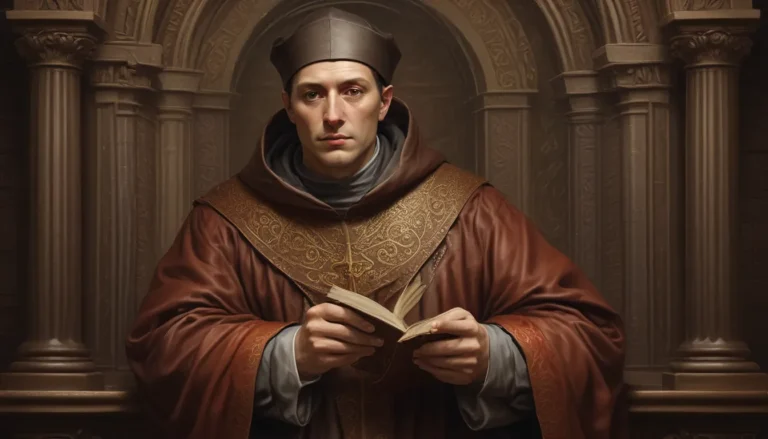The images in our articles may not match the content exactly. They are used to grab your attention, not to show the exact details in the text. The images complement the text but do not replace it.
In the annals of German history, Erich Honecker stands out as a significant figure, known for his tenure as the General Secretary of the Socialist Unity Party of Germany (SED) and the leader of East Germany from 1971 to 1989. His controversial leadership, influence on the German Democratic Republic, and eventual fall from power have left an indelible mark on the political landscape of the time. Let’s delve into the life of Erich Honecker and uncover some intriguing insights about this enigmatic historical figure.
Entering the World of Politics: Erich Honecker’s Rise to Power
Erich Honecker ascended to the powerful position of General Secretary of the Communist Party in East Germany, holding sway over the political and social dynamics of the region for almost two decades. Under his leadership, East Germany witnessed significant transformations, shaped by Honecker’s fervent commitment to socialist ideals.
Embracing Socialism: The Ideological Foundation of Honecker’s Leadership
Honecker’s leadership was defined by an unwavering belief in socialist principles, advocating for collective efforts, equal rights among citizens, and the elimination of class distinctions in East German society. His dedication to implementing these principles permeated every aspect of his governance.
The Iron Grip: Honecker’s Media Control and Censorship Policies
During Honecker’s rule, media outlets in East Germany were subject to stringent regulations, with the government tightly controlling the flow of information to the public. Censorship measures were enforced to suppress any dissent or criticism of the government and the socialist system.
Building a Better Future: Honecker’s “Bauen und Wohnen” Program
A pivotal initiative under Honecker’s administration was the “Bauen und Wohnen” program, aimed at enhancing housing conditions for East German citizens. By focusing on the construction and renovation of residential units, the program sought to provide every individual with a comfortable and affordable living space.
A Divisive Divide: Honecker and the Construction of the Berlin Wall
Erich Honecker played a prominent role in the decision to erect the Berlin Wall in 1961, dividing East and West Berlin and serving as a barrier to prevent mass emigration from East Germany to the West.
Restricting Mobility: Honecker’s Stringent Travel Regulations
Under Honecker’s regime, East German citizens faced strict limitations on international travel, with permission to journey abroad granted only under exceptional circumstances and subject to bureaucratic hurdles.
The Erosion of Authority: Protests and Opposition Against Honecker’s Rule
Despite efforts to maintain control, Honecker’s government encountered widespread resistance from the East German populace. Calls for political reforms intensified, leading to significant protests and ultimately culminating in the fall of the Berlin Wall in 1989.
The End of an Era: Honecker’s Resignation and Subsequent Trials
In the wake of the peaceful revolution and the reunification of Germany, Erich Honecker was compelled to step down from his position as General Secretary of the Communist Party. Facing allegations of human rights violations, he was subsequently prosecuted for his role in the deaths of individuals attempting to escape East Germany.
A Contested Legacy: Erich Honecker’s Place in History
The legacy of Erich Honecker continues to spark debate and scrutiny in German historical discourse. While some view him as a symbol of oppressive governance and human rights transgressions, others contend that his efforts aimed at improving the living standards of East German citizens should be recognized.
Conclusion
In conclusion, Erich Honecker’s life story is a tapestry woven with significant events that shaped the trajectory of East Germany and the broader Cold War era. From the construction of the Berlin Wall to his staunch advocacy for socialist ideals and eventual exile, Honecker’s legacy is multifaceted and continues to elicit varied interpretations in historical analysis.
FAQs about Erich Honecker
-
Who was Erich Honecker?
Erich Honecker was a prominent German politician who served as the General Secretary of the Socialist Unity Party and later as the head of state of East Germany from 1971 to 1989. -
What was Honecker’s role in the construction of the Berlin Wall?
Honecker played a pivotal role in the decision to build the Berlin Wall in 1961, with the aim of stemming the tide of emigration from East Germany. -
How long did Honecker remain in power?
Honecker held onto power for 18 years, from 1971 to 1989, making him one of the longest-serving communist leaders in Eastern Europe. -
Why is Honecker considered a controversial figure?
Honecker’s controversial reputation stems from allegations of authoritarian governance, human rights abuses, and the suppression of dissent during his tenure. -
What led to Honecker’s downfall?
Honecker’s downfall was precipitated by mounting pressure for political reform, economic struggles, and widespread protests against his regime, culminating in his resignation in 1989. -
Where did Honecker go after his removal from power?
Following his ousting, Honecker sought refuge in the Soviet Union and later in Chile, where he resided until his passing in 1994.
By exploring the multifaceted facets of Erich Honecker’s life and governance, we gain a deeper understanding of the complexities that defined East Germany during his rule. As we navigate the annals of history, it is essential to critically examine the legacies of leaders like Honecker to glean valuable insights into the socio-political landscapes of their times.






